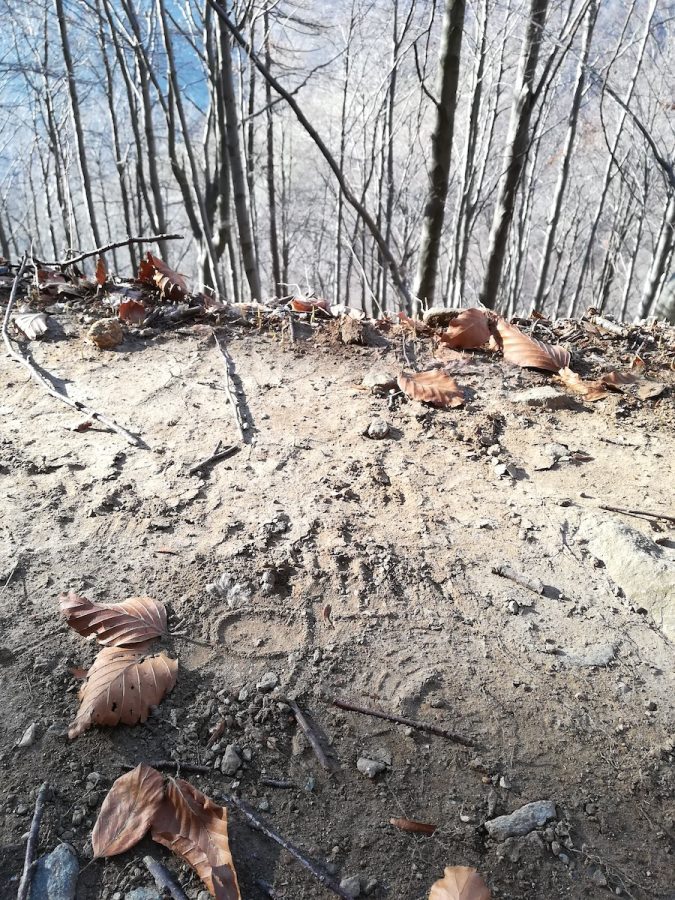Written by Guest Contributor on The Prepper Journal.
Editor’s note: This is the last in the series of articles by guest generator Kyt Lyn Walken on tracking and its applicability to prepping. — Wild Bill
In the previous article we learned some of the” tools of the craft” for the Art of Tracking, and we discovered that proper observation can lead to significant reductions and to the correct interpretation of an entire trackline, either in daylight or night, either in the great outdoors or in an urban environment.
Now it’s time to discuss about two different aspect: flow and, consequentially, the principles of stalking.
Since the ground is” the oldest newspaper in print”( David Michael Hull, 2015 ), by the correct use of all the tools this Art provides us, we can understand what happened at a certain time and place.
Move silent, move deep
But what if we are literally approaching our prey, either if it is a human we are tracking or a animal we are hunting? What mechanisms do our psyches and figures initiate in a moment like that?
In this article we will get more passionately into this inner dimension.
” The misfortune of life is not what mortals suffer, but what they miss”( Thomas Carlyle, quoted by Tom Brown Jr. in” Tom Brown’s Field Guide– Nature Observation and Tracking”, 1983 ). Taking this as a starting point, it is crystal clear that remark of racetracks does not only involve a good duet of hearts, but likewise a luminous ability and an inquisitive coming. We covered under previous sections about the employment of all five feels, plus tendency. We have now to consider how we should move during our follow-up.
This might announce strange, but I believe we really need to learn how to move in the outdoors. The chaotic life the majority of members of us live inside metropolitan areas has stolen our capacity to move at a slow rythm. Nature, however, requires it, specially if we are tracking animals.
Slowness and deliberation, in fact, give several benefits 😛 TAGEND
we can catch many more details of our surrounding environmentattune us to more of the tones and interferences in our areaallow our brain to adapt to the inner rythm of Nature, as suggested by Tom Brown Jr in” The Science and Art of Tracking“( 1999)
Blend in
Fundamentally, it is a matter of being able to blend inside the forest or other outdoor place you are in. I often admonish my students as their eagerness to learn tracking propagandizes them into a much frenzied( and rapid !) march while on the Trackline, telling them,” If you miss out, you mess up !” In fact, once the tracks have been contaminated…by other etches, as one example…they proceed for good. The chances of picking up the correct moves and clue again will be very small, especially for absolute beginners.
Haste and ego are your worst foes in Tracking. You don’t stand alone and fierce in your adjacents, but blend into it. Quite simply, you disappear, a notion anyone familiarise themselves with the skill of cloak will understand.
Move slowly, stepping to the outsides of your feet and then rolling softly on the inside, abiding speechles, and to process the palms of your hands upon your knees, or even crawling( or slightering, if needed !).. are all useful when it comes to tracking.
To blend into the environment even more, peculiarly if you are a hunter, you should evaded products or activities that would leave a strong reek on you( deodorant, smell, colone, toothpaste, chewing gum, booze, tobacco and so on ). In the same way, you should be aware of wind direction in order not to give away your position. Starting a clique fervour is, undoubtedly, strictly forbidden.
All the above mention aspects for approaching target fall under the category of” Stalking techniques .” Freezing in place is also a good procedure to use, if you’re in a situation where you’re liable to be spotted.You immediately and quietly freeze in its own position, waiting to hear and/ or hear more.
Apply what you’ve learned
Now that “youre one” with the environmental issues, you are should apply what you know about Tracking to the trackline you are creating by yourself. By that, I intend be conscious of your acts; do not break what you can overcome, do not tear what you can bend. In other paroles, leave the minimum damage to the surrounding vegetation, but pass across it shortening any ratify, starting the smallest alteration. Blend in with it and keep on being on track!
REFERENCE
For more information on tracking techniques, here are some notebooks and websites you may find imaginative: https :// man-tracking.com/ free-download-tracking-docs-texts /
To purchase Mike Hull’s book: https :// www.amazon.com/ Man-Tracking-Law-Enforcement-www-hullstrackingschool-com-ebook/ dp/ B07NPVB13W
On historical backgrounds& story on Tracking: www.Facebook.com/ tributestotracking
Kyt Lyn Walken is the official European representative and instructor for Hull’s Tracking School( Virginia, USA ), and is a showed Conservation Ranger for C.R.O.W.( Conservation Rangers Functionings Worldwide ). She has been an outdoors and tracking enthisast since infancy. Kyt lives and works in Europe, and can be contacted at www.man-tracking.com
The post MOVEMENT IN TRACKING AND THE PRINCIPLES OF STALKING loomed first on The Prepper Journal.
Read more: theprepperjournal.com
